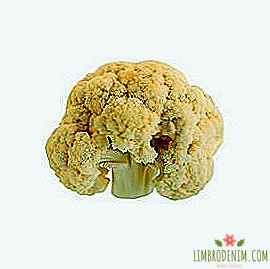What to eat in the autumn: 10 healthy seasonal products
Fortunately, the fruit and vegetable season does not end with summer. - And many of them just become the most tasty and juicy in the fall. We tell which products are best to choose now in order to get more vitamins, trace elements and fiber. Save this list to your notes so that you can easily use it in a store or on the market.

stroke, Alzheimer's disease and even cancer.
It is believed that autumn apples (there are still those that ripen in summer and winter) are the most delicious and healthy. In support of the second fact, we don’t have evidence, but you will be able to make sure of the first one in a few weeks when they harvest. For autumn varieties of apples include "autumn striped", "cinnamon striped", "boletus", "Bolotovskoe", "anise scarlet", "Baltic". In the kitchen with them, you can turn a lot of manipulations: make jam, fry pancakes, make the perfect cake according to Martha Stewart's recipe, bake with oatmeal or cinnamon (and you can forget about scented candles for a couple of days). And if you do not like pastries and desserts, then add apples to sausages, pork chops or in a salad with red cabbage.

Brussels sprouts
Frozen Brussels sprouts are sold all year round, but fresh ones appear on the markets and in supermarkets only in October. It contains many vitamins, for example K, C, A, manganese, fiber and folic acid - the latter is especially important in preparing for pregnancy and in its initial stage.
Brussels sprouts are distinguished not only by their small size, but also by their sweet-nutty flavor; larger cabbages can be bitter, but heat treatment, lemon juice and other seasonings will easily fix this and soften the taste. This vegetable is an excellent side dish for fish or meat, it is usually steamed or stewed. We propose to go further - and bake the cabbage in the oven, for example, with honey or with apples and bacon. Or even make vegan cream soup out of it.

Sweet potato
Scientists believe that the sweet potato began to grow about five thousand years ago, but on the shelves of Russian stores, he got not so long ago. Because of this, people know almost nothing about the sweet potato and pass by it, but in vain. The main advantage of sweet potato over the usual one is that it is rich in vitamin A (only one medium-sized potato contains about four daily doses of this vitamin) and has a low glycemic index - that is, it does not raise the level of sugar in the blood, slowly absorbs and for a long time fills. At the same time, both types of potatoes contain potassium and vitamin C.
Take the first yam is not worth it - choose a solid fruit, without cracks and dents, small or medium size. It is better to keep sweet potatoes in a cool, dark, well-ventilated place and not longer than two weeks. You can make almost the same from a sweet potato as from ordinary potatoes: bake in the oven, make soup or mashed potatoes, make chips or fries. But thanks to the sweet taste, it can be safely used for desserts and pastries: chocolate muffins, brownies, waffles or donuts.

polyphenols and anthocyanins, which protect cells from damage. Theoretically, all these substances contribute to lowering blood pressure, preventing cardiovascular diseases, prostate cancer and breast cancer.
Choosing a ripe pomegranate is no easier than peeling it. Here is a brief instruction that will help you find a tasty and ripe fruit: the fruit must be heavy, it reflects the juiciness of the grains; the shade of the peel (pink, red, brown) is not important, but the deeper the color, the better; a ripe pomegranate resembles a cube rather than a ball; the skin should be soft, smooth and solid (no dents and scratches). Pomegranate can be eaten fresh - just like that or added to a tuna salad, morning porridge or smoothie. You can make a sparkling margarita or sangria; if you prefer soft drinks, try pomegranate tea.

Cauliflower
The cauliflower season begins in September - and this must be exploited. This vegetable contains few calories (25 per 100 grams) and many nutrients, such as vitamins C, K, B6, potassium, magnesium, manganese, phosphorus, folic acid, fiber and choline (cauliflower is one of the few foods that contain it). ). The lack of the last substance is found in people quite often, but it is better not to allow this - choline performs many important functions in the body. For example, it maintains the integrity of cell membranes, is involved in DNA synthesis and normalizes metabolism. It also plays an important role in brain development and the production of neurotransmitters - chemicals involved in the transfer of information between neurons.
Cabbage can be cooked not only steamed (it's boring and not always tasty). Cooks and food bloggers have come up with many other options: make a cream soup or bake with spices and add as a garnish to fish or poultry. Perhaps the most unexpected thing to make from cauliflower is the basis for pizza.

Grapes
Although grapes are sold all year round, the season in Russia begins in August and lasts until the end of October. There are a lot of grape varieties, it makes no sense to list them - try different ones and look for the one you like the most. Polyphenols and potassium are good for the heart and help prevent hypertension. And antioxidant resveratrol may be effective in treating acne.
If you are not going to master the art of winemaking, there are many other, simpler ways to use grapes in the kitchen. Try panna kotta with baked grapes, add berries to salads, such as chicken and Greek yogurt. And if you don't want to get lost in the kitchen, make toasts with grapes and ricotta. You can simply freeze the berries.

heart, lungs, kidneys and other organs. In the fruit there are such important eye health pigments as lutein and zeaxanthin. In a study in which 102,046 people took part, it turned out that lutein and zeaxanthin inhibit the development of age-related macular degeneration, a disease in which visual acuity decreases.
Dozens of different snacks can be made from persimmon — for example, you can make a dessert with Greek yogurt and pistachios, wrap the persimmon slices in dried ham, or put slices of baked fruit on toasted brie cheese. Another “fast” dish with persimmon is a salad with arugula, almond and parmesan. And if you like unusual tea and are not averse to making it yourself (and spending half an hour to do it), here is a warming drink recipe.

Daikon
Daikon looks like a large white carrot, and to taste it is much softer than radish or radish. The main reason why daikon should be in your food basket is a high content of vitamin C: 22 milligrams per 100 grams of root vegetables (the daily rate of vitamin C for women is 75 mg, for men, 90 mg). Vitamin C is involved in the biosynthesis of collagen - a protein that forms the basis of connective tissue and is involved in wound healing. But in the case of an autumn cold, do not rely on daikon: studies show that taking vitamin C (200 mg per day) will speed up the healing process by only eight percent.
Usually daikon is rubbed on a large grater and added to salads, for example, with mango and mint, or vegetable spaghetti is made from it. Do not like the taste of fresh daikon? Stew it with meat, bake in slices in the oven without a lot of butter or make curry.

Feijoa
In Russia, feijoa is grown in the Krasnodar Territory, the season starts in November. The taste of the fruit is specific, rather sour and not everyone likes it, but if you have never tried it, go to the market in November and buy at least a little. Feijoa fruits are rich in vitamins C (32.9 mg per 100 grams - almost half the daily norm for women), E, K, A, group B. In addition, they contain iodine, copper, manganese, magnesium, potassium, iron, calcium and possess powerful antimicrobial properties.
The best that can be made from feijoa is jam, and besides, it is not as difficult as it seems, and will take no more than an hour. With feijoa you can bake crumble, which is better to serve with vanilla ice cream - you do not have time to recover, how to eat everything from the plate (and maybe, right from the pan).

and vitamin C. In addition, the presence of pears in the diet can improve the health of the intestines, prevent constipation and even reduce the risk of developing type 2 diabetes and stroke.
Pears are perfectly combined with many products, so you can add them blindly almost anywhere - they are unlikely to spoil the taste of the dish. If you do not want to rely on luck, but follow the exact recipes, first of all from pears it is better to cook the famous French dessert tart. More difficult - a pie with pears, red wine and rosemary. Pears can be baked in the oven with honey and cinnamon. And this fruit is great for salads, for example, with greens and walnuts or with arugula and prosciutto.
Photo: gray - stock.adobe.com, Valerii Zan - stock.adobe.com, Leonid Nyshko - stock.adobe.com, ilietus - stock.adobe.com, ilietus - stock.adobe.com, ilietus - stock.adobe.com, kate - stock.adobe.com, kate stock.adobe.com, ILYA AKINSHIN - stock.adobe.com, siwaporn999 - stock.adobe.com, assja_sav - stock.adobe.com




